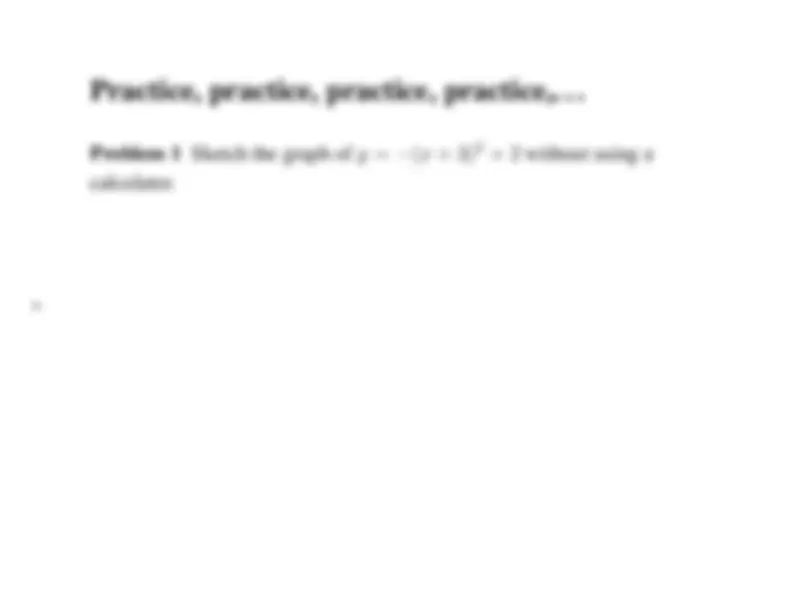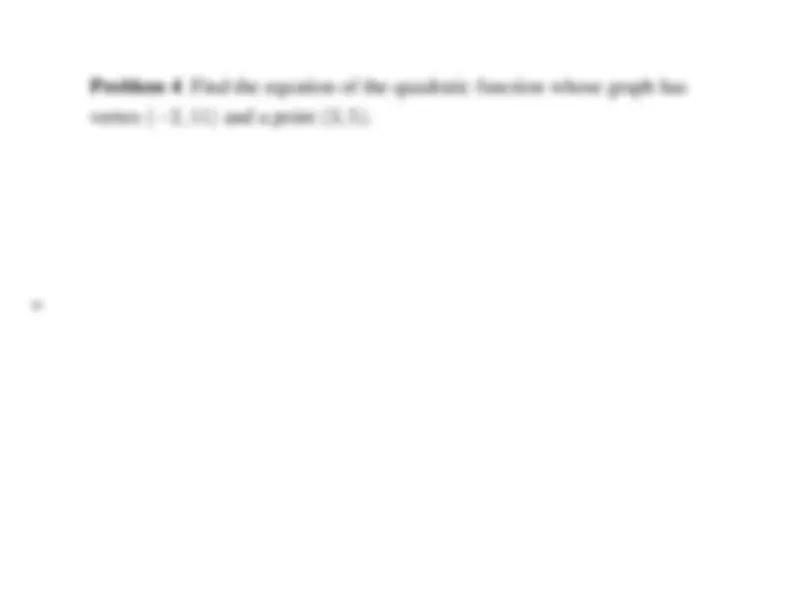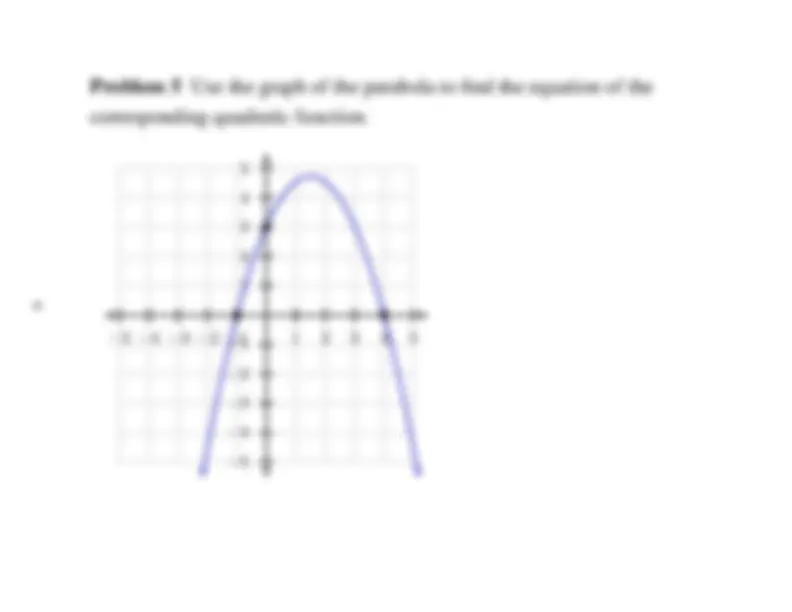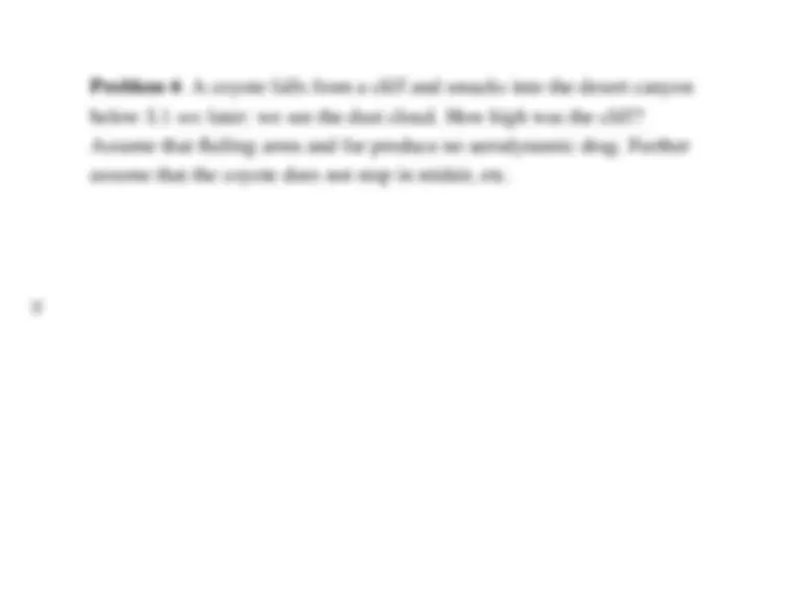








Study with the several resources on Docsity

Earn points by helping other students or get them with a premium plan


Prepare for your exams
Study with the several resources on Docsity

Earn points to download
Earn points by helping other students or get them with a premium plan
Community
Ask the community for help and clear up your study doubts
Discover the best universities in your country according to Docsity users
Free resources
Download our free guides on studying techniques, anxiety management strategies, and thesis advice from Docsity tutors
This document from eastern kentucky university, fall 2008, covers the goals and practices for learning about quadratic functions. Students will learn to recognize and use geometric properties, different forms of equations, and algebraically transform equations. Several problems for practice, such as sketching graphs, completing the square, finding the vertex, and determining the equation of a quadratic function given its graph.
Typology: Study notes
1 / 11

This page cannot be seen from the preview
Don't miss anything!







R. D. Buskirk Eastern Kentucky University
Fall 2008
∈^ R^ and
a^6 = 0
f^ (x) =
(^2) ax+ bx^ +^
c^
general form
f^ (x) =
a^ (x^ −
(^2) h)+ k,^ h
b, 2 a
(^4) k = ac^ −^ b
2 =^ f 4 a
(b^ −^2 a
vertex form
-^ algebraically transform one form of the equation to the other form,including
completing the square
-^ algebraically find the
vertex
,^ axis of symmetry
Sketch the graph of
y^ =^ −
(x^ + 3)
2 + 2^ without using a
calculator.
Problem 2
Complete the square and find the vertex form of the quadratic function. Then find the vertex and axis.(a)^ f^ (
x) =^ x
2 −^5 x
Problem 3
Find the vertex using the vertex formula, then graph the function showing the vertex, axis and
y-intercept:
f^ (x) =
(^2) − 2 x
Problem 4
Find the equation of the quadratic function whose graph has vertex
and a point
Problem 6
A coyote falls from a cliff and smacks into the desert canyon below^
3 .1 sec
later: we see the dust cloud. How high was the cliff? Assume that flailing arms and fur produce no aerodynamic drag. Furtherassume that the coyote does not stop in midair, etc.
Page 189, #90.